Capitol Skyline: A Mid-Century Modern Hotel for the Jet Set in Southwest DC
The former Skyline Inn faces demolition
An application has been filed with the DC government for a permit to tear down the Capitol Skyline Hotel at South Capitol and I Streets SW. Designed by famed Mid-Century Modern architect Morris Lapidus and constructed in 1962, the hotel is an icon of mid-century Washington and one of only two hotels Lapidus designed for the city. It will be sad to see it go.
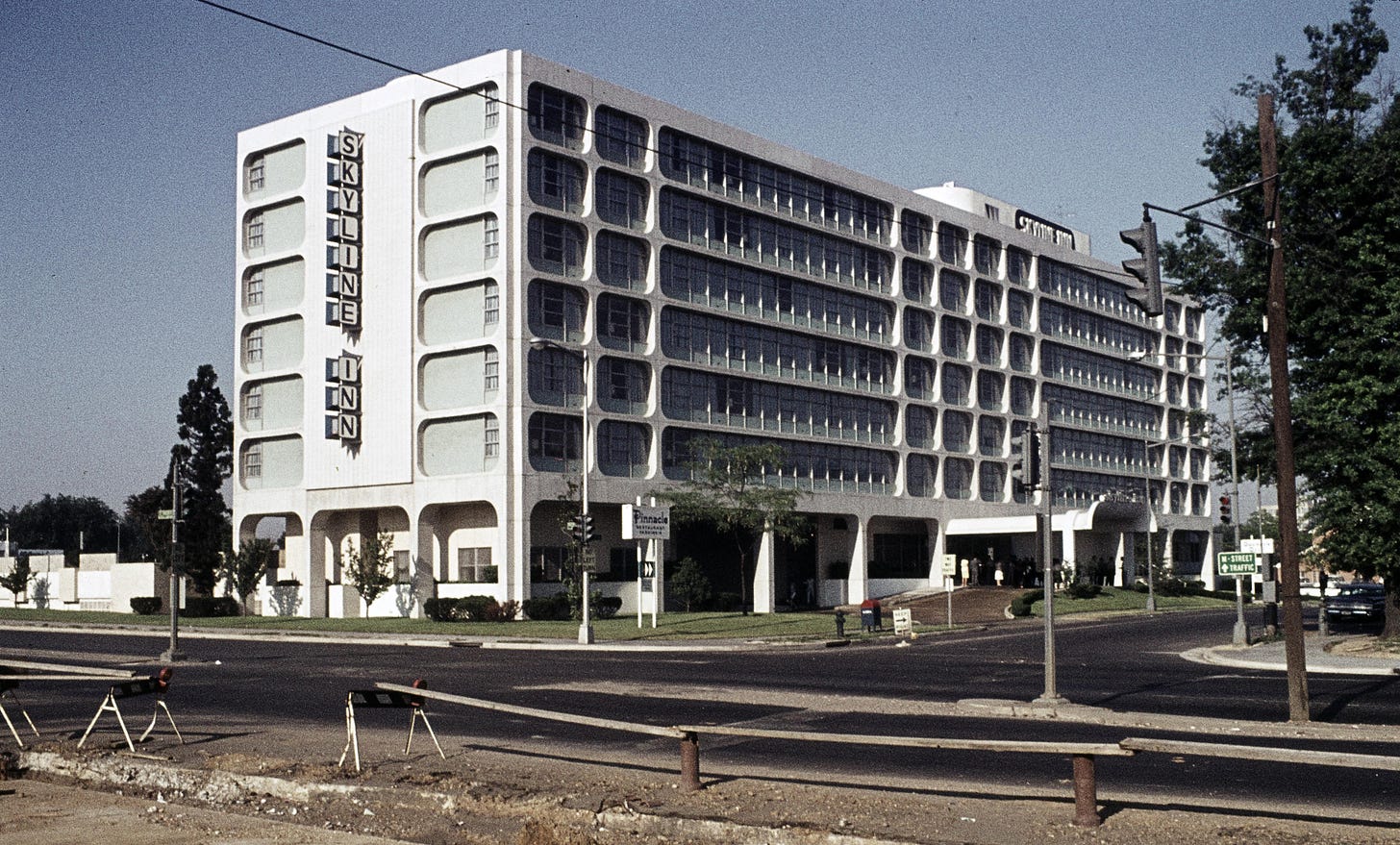
Born in Odessa, Ukraine, Lapidus was a prolific architect known especially for his hotels. His Orthodox Jewish family fled from Odessa to New York when he was still an infant. He earned an architecture degree from Columbia University in 1927 and embarked on a career as a retail interior designer. After 22 years, he switched gears and began designing buildings, gaining fame in the 1950s for his dramatic Fontainebleau and Eden Roc Hotels in Miami Beach—buildings that some critics derided as garish. “Damn it, I want my buildings to be noticed,” Lapidus insisted, and noticed they were. Regarding hotels, Lapidus argued that “People are looking for a change, a lift out of ordinary life, not just bed and board. And change implies that a hotel has got to be different—even a little far-fetched.”1
In addition to the 207-room Skyline Inn, Lapidus designed the International Inn (now the Washington Plaza) on Thomas Circle, which, like the Skyline, was completed in 1962. The Skyline Inn’s distinctive arrays of rounded concrete window frames made it very stylish. They unquestionably evoke their era. Despite his fondness for the radical and unexpected, Lapidus aimed to respect the capital city’s famously conservative tastes, cladding both the Skyline Inn and the International Inn in white finishes because he viewed Washington as a “city of white.”2
The hotel is at the eastern edge of the Southwest Redevelopment Zone, where DC’s most infamous urban renewal project was razing established communities and filling blocks with sleek, mid-century apartment buildings and townhouses. The hotel’s New York owners, who had built their first Skyline Inn in New York City in 1959, saw their new venture as more closely connected to Capitol Hill than Southwest. They hoped its location near the Capitol would prove enticing to “Congressmen, Senators, lobbyists, tourists and their families and friends.”3
Amenities included a large swimming pool (more on that later) and a sizable meeting room, called the Hall of States, that could seat 300. The hotel’s “plush” restaurant, the Pinnacle, offered poolside service in good weather. Run by New York restaurateur Ernest Goodman, the Pinnacle featured “Epicurean Continental” fare, which apparently meant an assortment of popular dishes. The Evening Star’s restaurant critic, John M. Rosson, loved the restaurant’s swank, “ultra modern” decor as much as its “excellently prepared” food. The Capitol Hill neighborhood, Rosson observed, “can boast of far too few good restaurants, so when a worthwhile newcomer arrives it can only meet with a glad-hand reception.”4
The upscale hotel had one major drawback—noise. Across I Street stood the old DC pound, an antiquated facility built as a horse stable that was overcrowded with dogs. Guests constantly complained about the barking from across the street. The more savvy among them would specifically ask for rooms at the back of the building to avoid the barking. On the Fourth of July in 1966, the sound of barking was even louder than the sound of the fireworks. —But the problem was about to be solved. That month, the pound moved to a new, much larger facility at 1201 New York Avenue NE. Suddenly, everyone was happy—including the dogs, who had much more humane quarters.5
By the 1980s, the hotel had lost its early luster. Visitors to Capitol Hill seeking hotel accommodations readily chose closer, more luxurious options. The massive Southeast-Southwest Freeway (I-695) had effectively cut off the hotel and other neighborhood properties from Capitol Hill. Eventually the Skyline Inn became a Best Western motel, catering to a less upscale market. Neglect and disinvestment left the neighborhood south of the freeway in decline, further discouraging visitors.
A 1992 incident illustrates the trend. Hotel managers called DC police because a rowdy group of teenagers was rollerblading in the halls, threatening guests, and refusing to leave when asked. They stole a key and holed up in a guest room, where police found them. “I can’t even tell you what it [the room] looked like,” a police officer testified in DC court, “It was trashed.” The five teenagers were arrested.6
Things began to change in 2002, when wealthy Florida art collectors Dan and Mera Rubell purchased the Skyline. The hotel was in bad shape. Daughter Jennifer Rubell told Washington Post reporter Hank Stuever in 2009 that buying the hotel was like acquiring one of those rundown old manor houses in England: “There were parts of the hotel that [the former owner] had just closed off—the banquet rooms, the restaurants—shut down, not functioning. If there was ever a problem in a room, then they would just close the room down and not use it.”
Since the 1990s, the Rubells had been buying and rehabilitating old hotels, and they had been looking for a such a place to fix up in DC. The Skyline fit the bill perfectly, its hints of bygone glamor beckoning. What’s more, Mera Rubell was friends with Morris Lapidus (who died just before the purchase of the Skyline could be finalized). The Rubells began restoring the old hostelry. which they renamed the Capitol Skyline Hotel, just as the promise of a new baseball stadium was sparking development interest in the neighborhood around them (the stadium would open in 2008). A major project was the restoration of the hotel’s large swimming pool. By 2009, it was once again the scene of summer fun and trendy cocktails delivered poolside by the reinvigorated restaurant, christened Lapidus. Younger Washingtonians came to know the hotel primarily for its raucous pool parties.7
The Rubells also began exhibiting some of their art in the hotel, which served as a venue for the annual (e)merge Art Fair in the early 2010s and was temporarily headquarters for the Washington Project for the Arts. The WPA organized SynchroSwim, an annual “exuberantly strange” synchronized swimming competition that took place in the revitalized swimming pool. Meanwhile, the Rubells’ interest shifted to finding a venue for a dedicated DC museum of their massive collection of contemporary art. They purchased the old Randle Junior High School, located just a block to the west of the hotel, renovating and reopening it as the Rubell Museum DC in October 2022.8
The pandemic of 2020 wreaked chaos throughout the hospitality industry, forcing many hotels and restaurants to close, including the Capitol Skyline. During those dark days, the hotel was leased by the city as one of five shelters for unhoused, medically vulnerable individuals. Since then, business never recovered. For approximately the last year, the hotel has been closed and unoccupied. The swimming pool has been removed. Whatever additional plans are in store for the site have not yet been made public.
“Architect Lapidus Sees Trend Toward Dramatic,” Washington Post, Sep. 5, 1962, B5; Daniel Poole, “Life in His Luxury Hotels Is Like Being on a Stage,” Evening Star, Oct. 20, 1962, B-1.
Poole, op. cit.
“A Hotel Grows in Southwest,” Evening Star, Jul. 21, 1962, B-3.
John M. Rosson, “At the Skyline’s Elegant Pinnacle,” Sunday Star, Dec. 27, 1962, A-15.
Phil Casey, “80 Tenants Move, Innkeeper Is Happy,” Washington Post, Jul. 7, 1966, C1.
Nancy Lewis, “Knock on Door Brought an End to Teenagers' Hotel High Jinks,” Washington Post, Aug. 26, 1992, D1.
Nicole M. Miller, “An Influential Family Arrives in D.C. With No Reservations,” Washington Post, Apr. 10, 2003, C5; Hank Stuever, “Lounge Act: A OnceTired and Untrendy Washington Hotel Offers A Dip in Times Gone By,” Washington Post, Jun. 15, 2009, C1.
Marc Fisher, “The Rubells: Art collectors with edge make D.C. their own,” Washington Post, Sep. 30, 2011; Sadie Dingfelder, “Synchroswim at Capitol Skyline Hotel brings wacky water performances to D.C.,” Washington Post, Aug. 14, 2014.



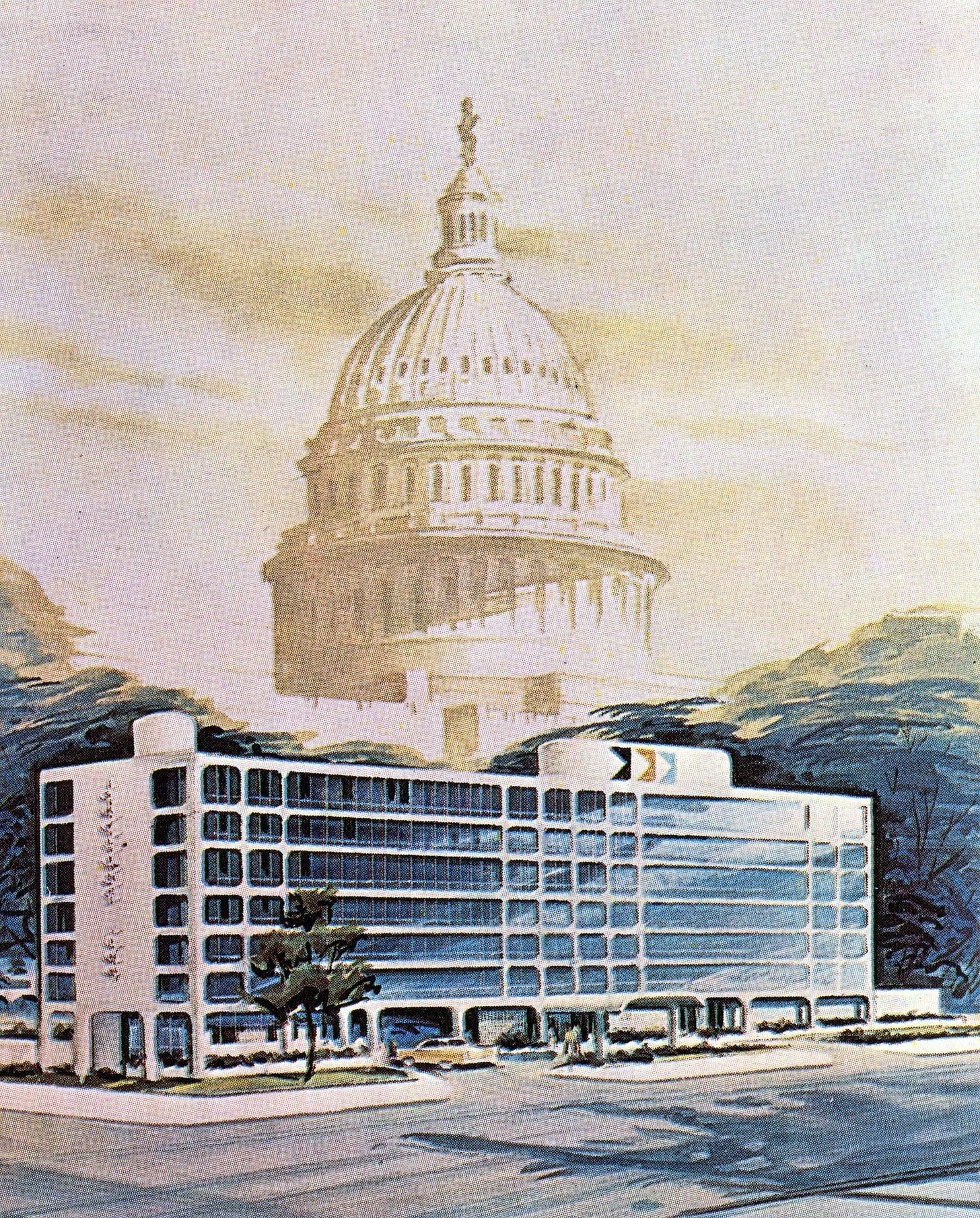
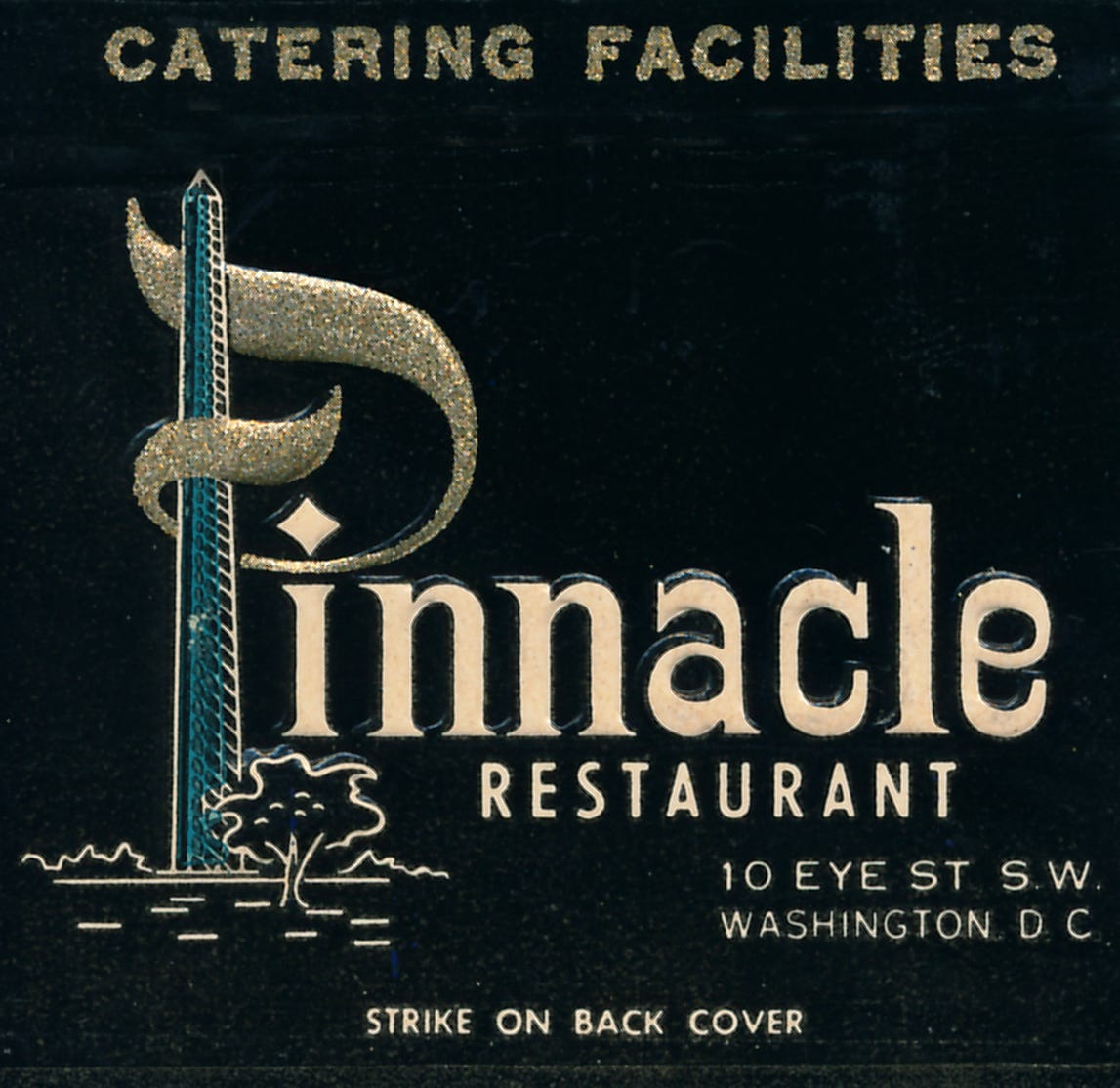
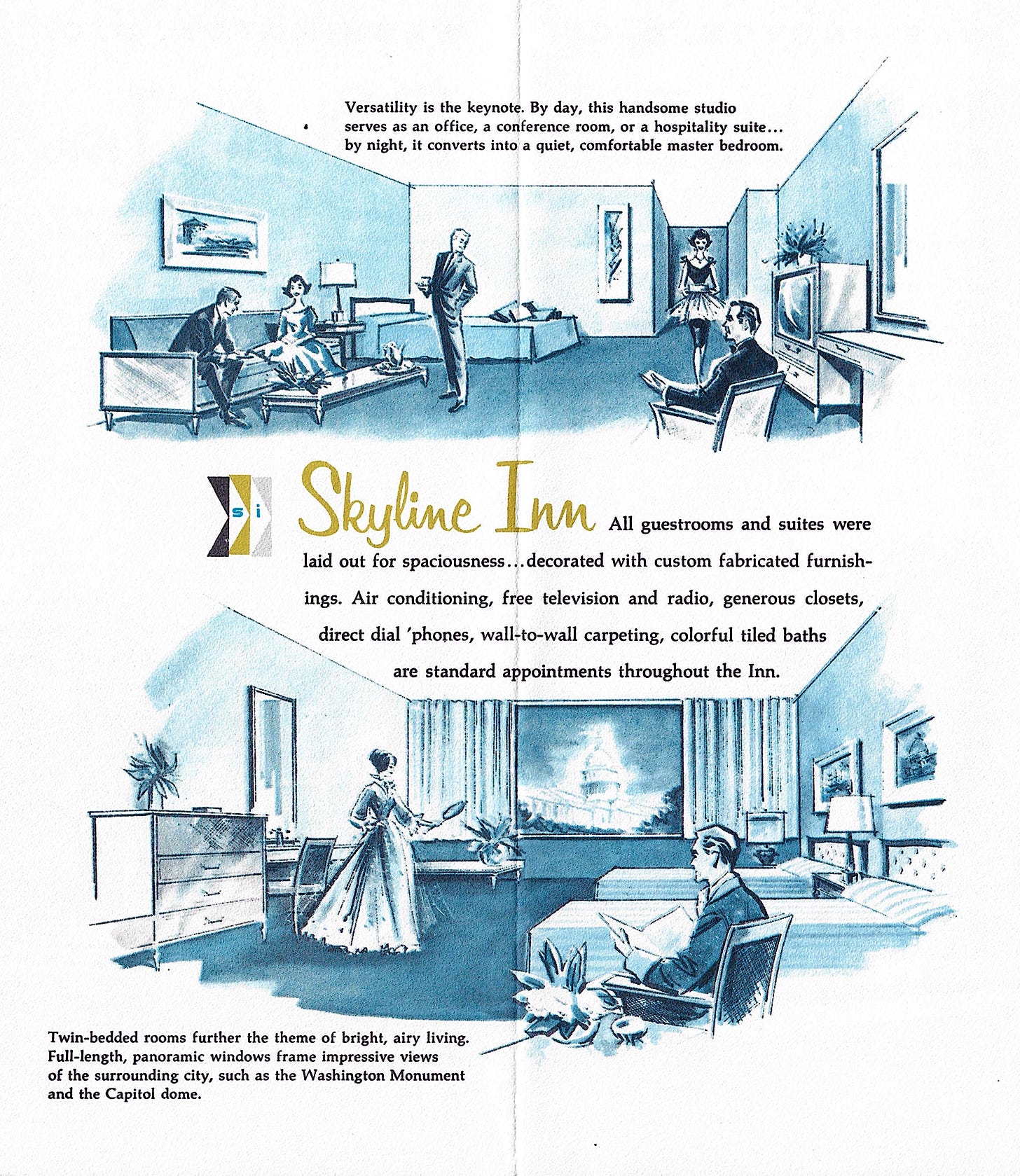
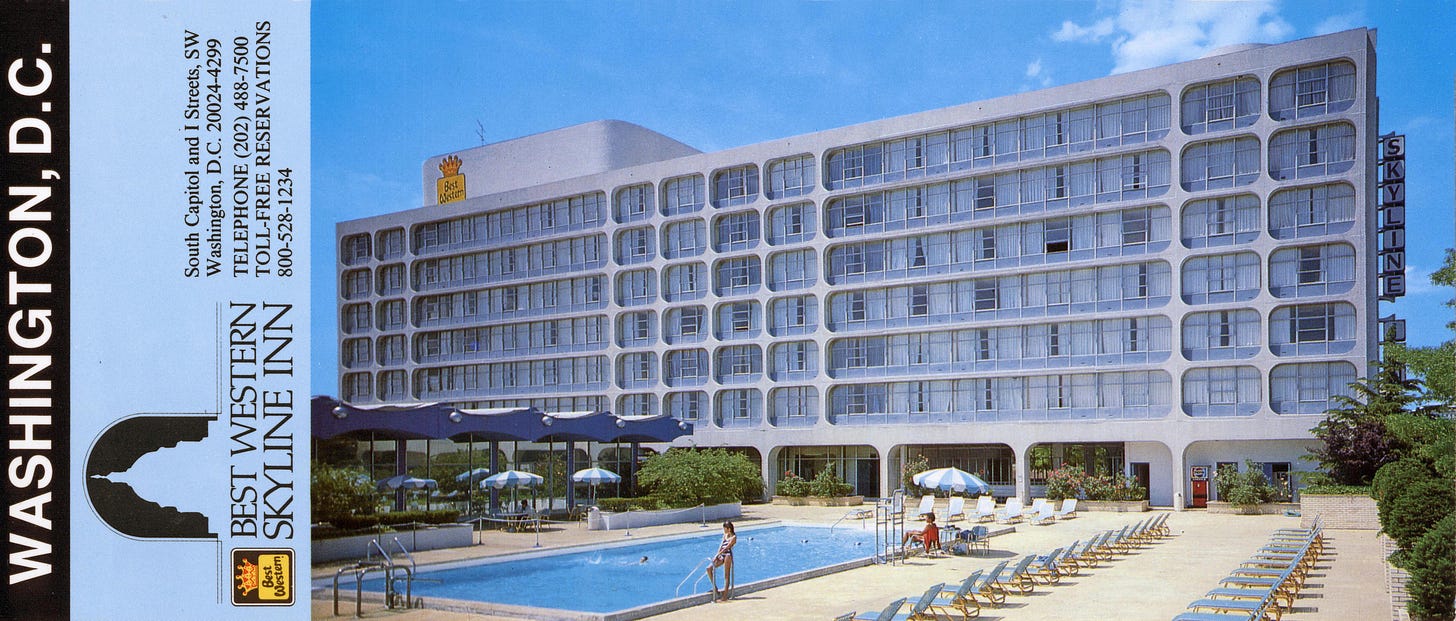
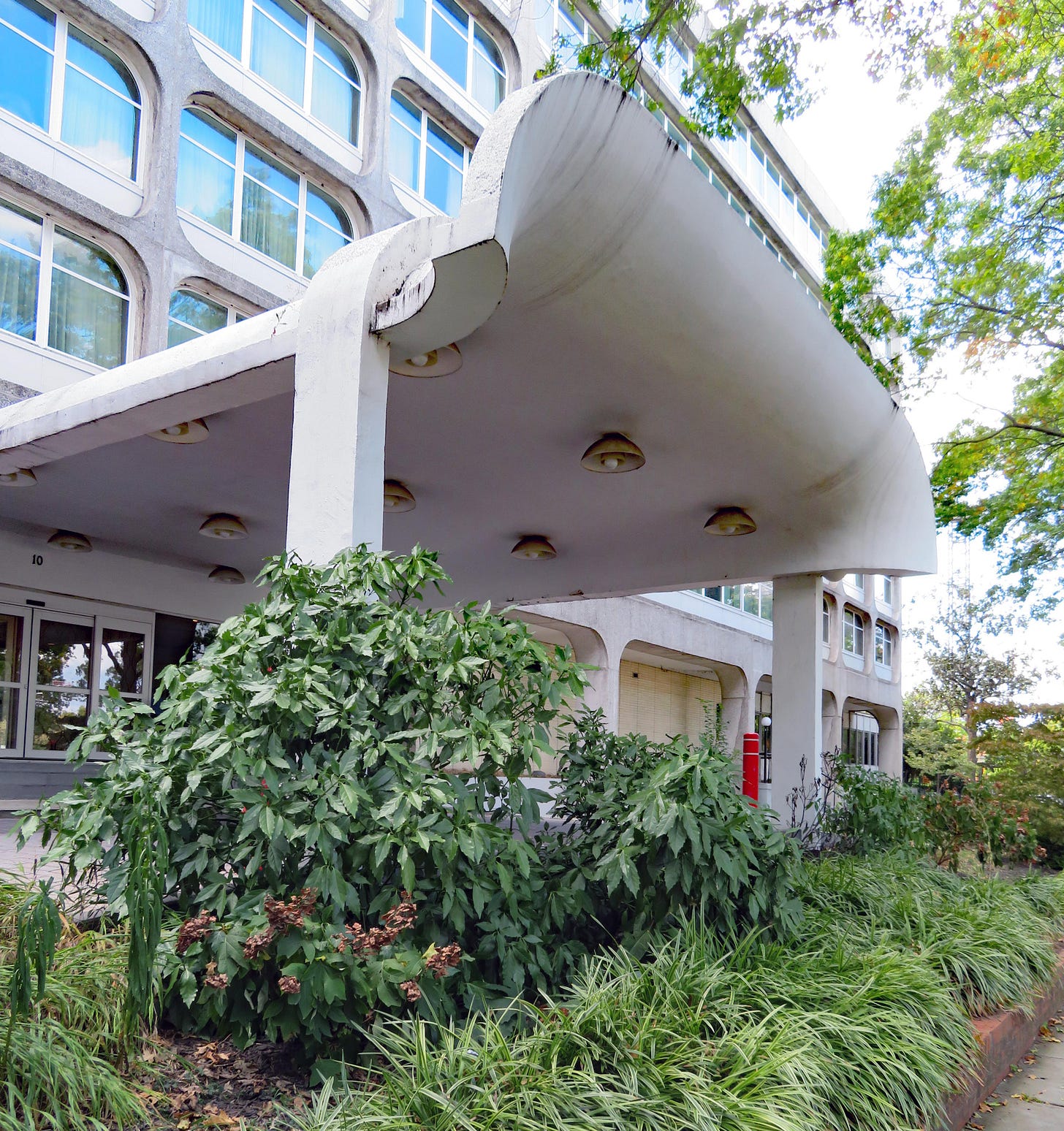
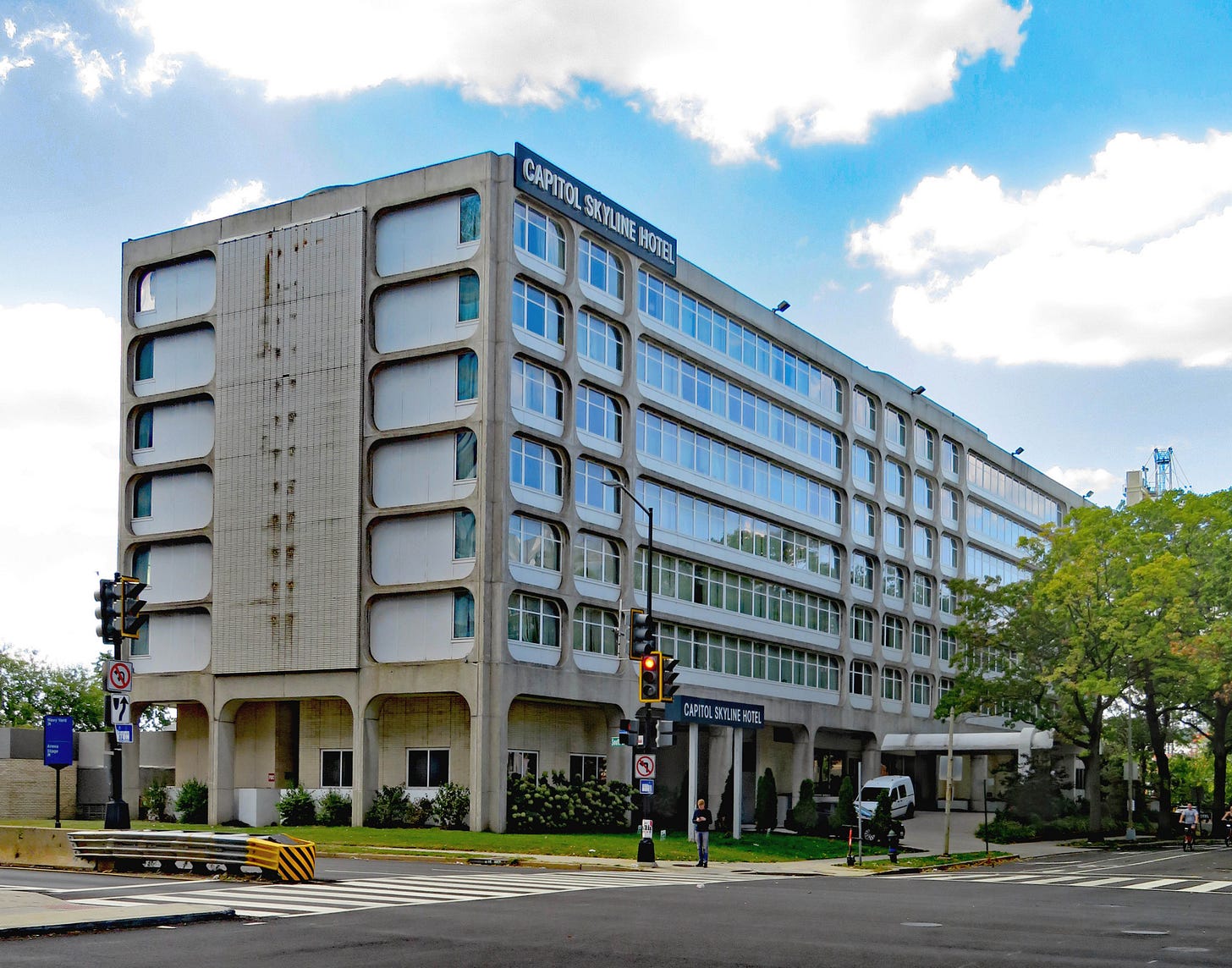
Great-looking building, a shame to lose it. At least one ballplayer - an older pitcher who doubted he would be with the Nationals long-term - lived there and would just walk to work!
The Washington Plaza is on Thomas Circle, not Scott Circle.